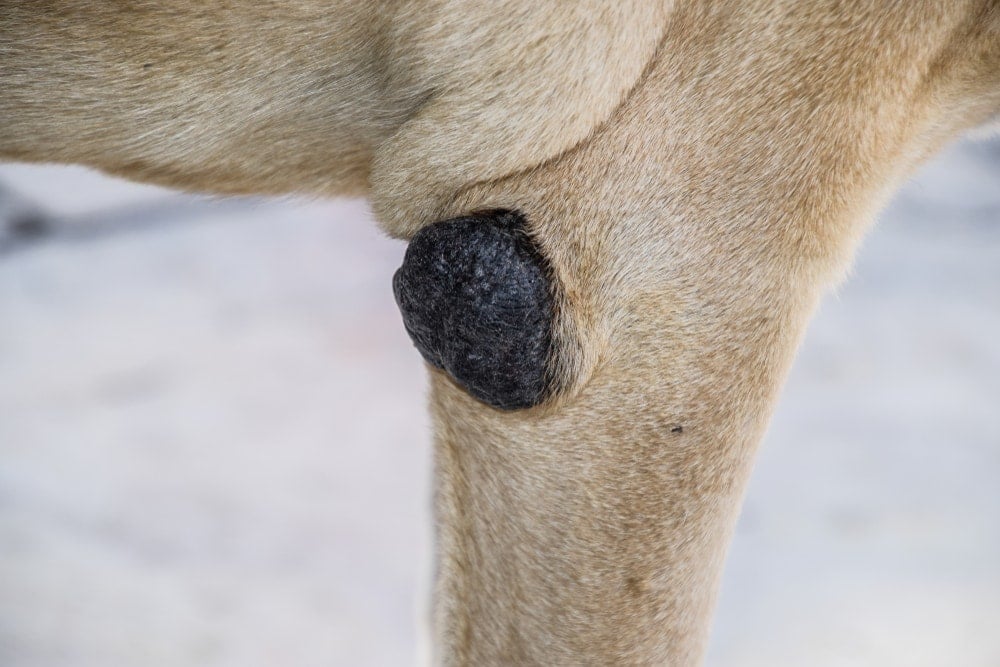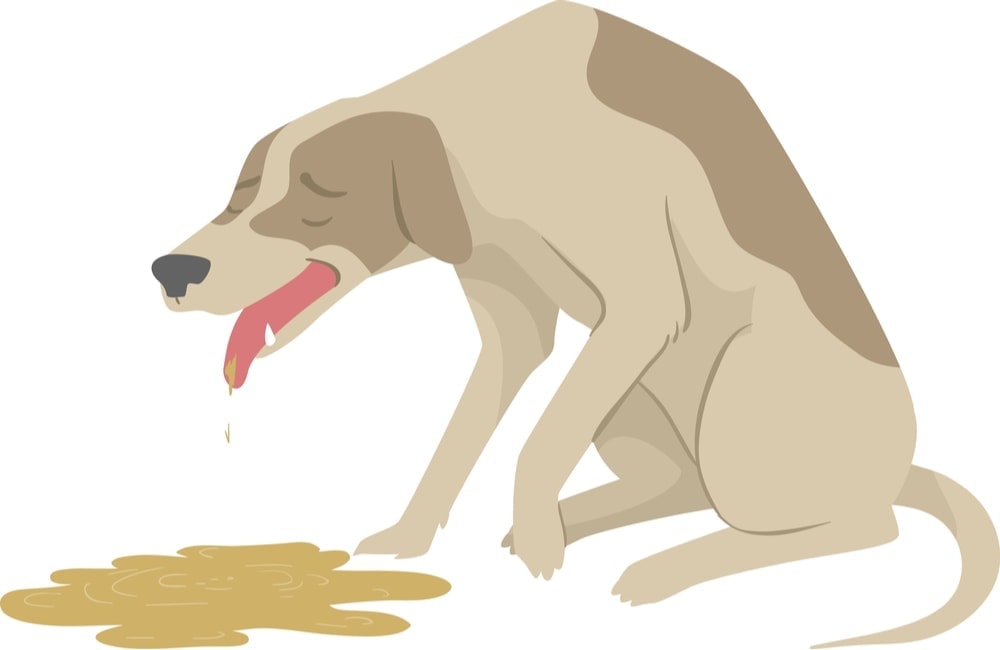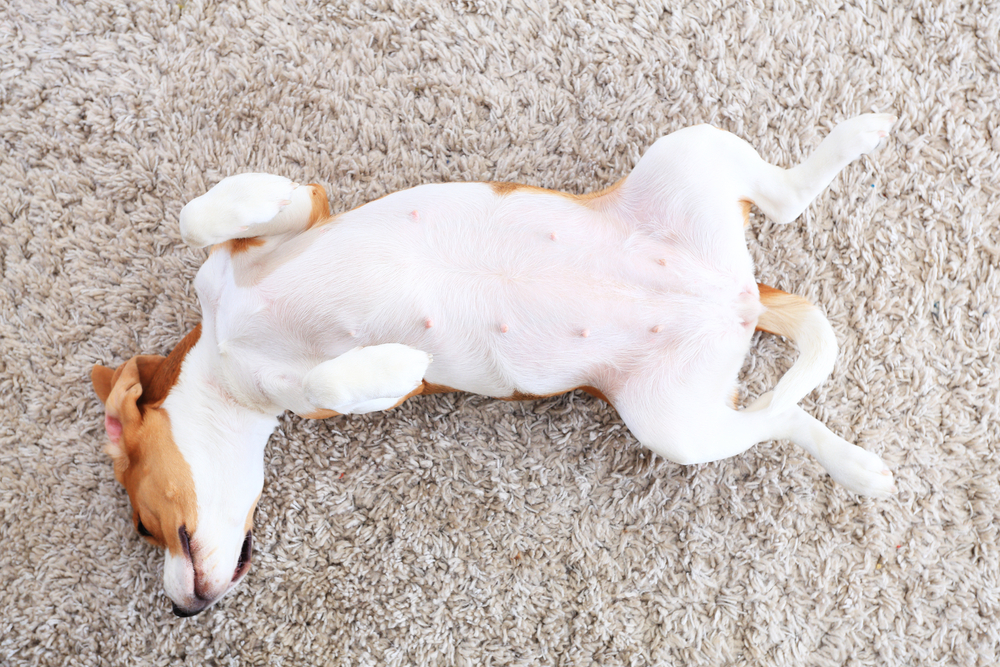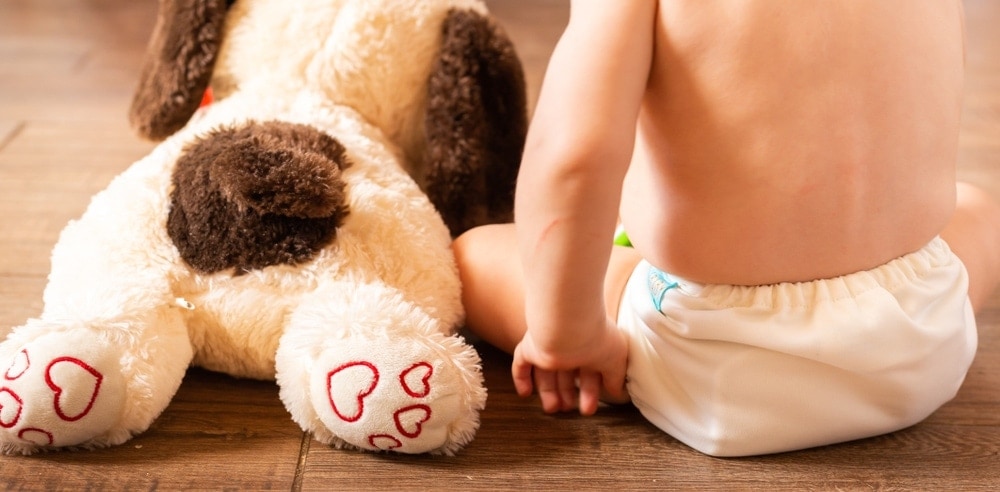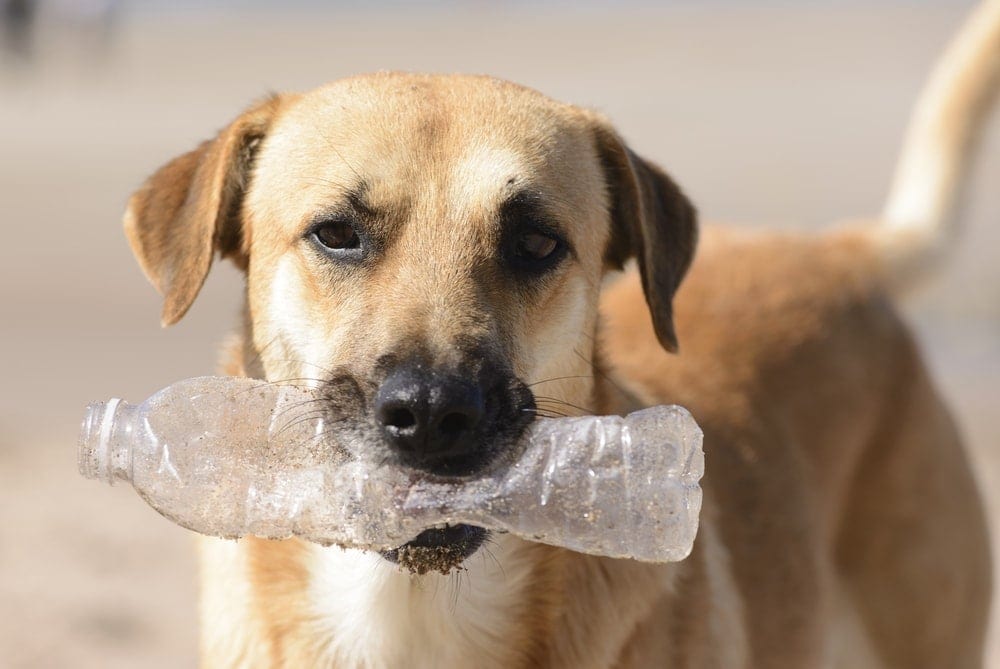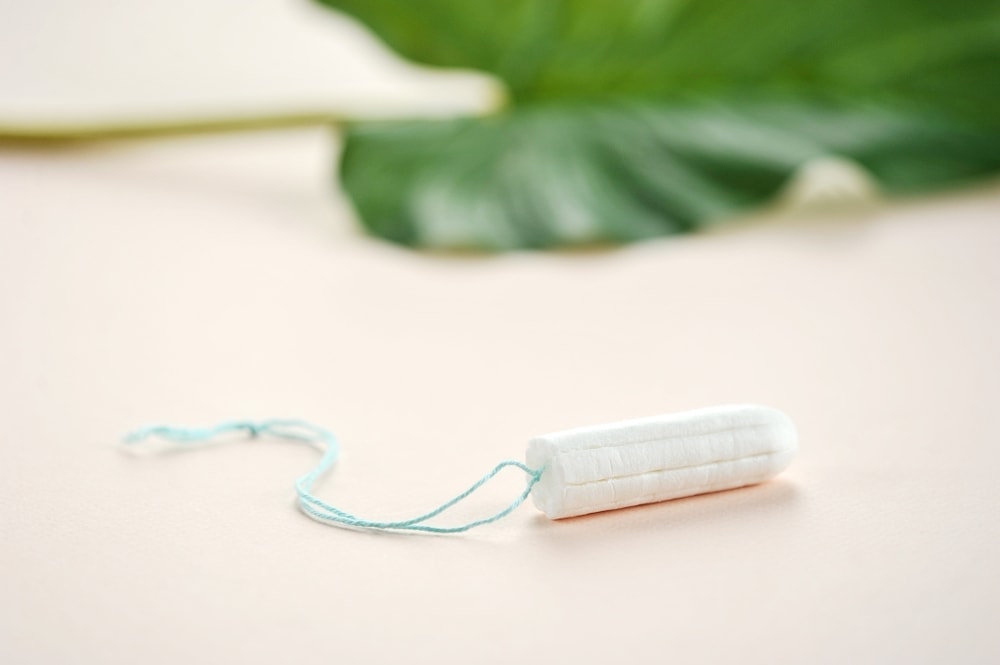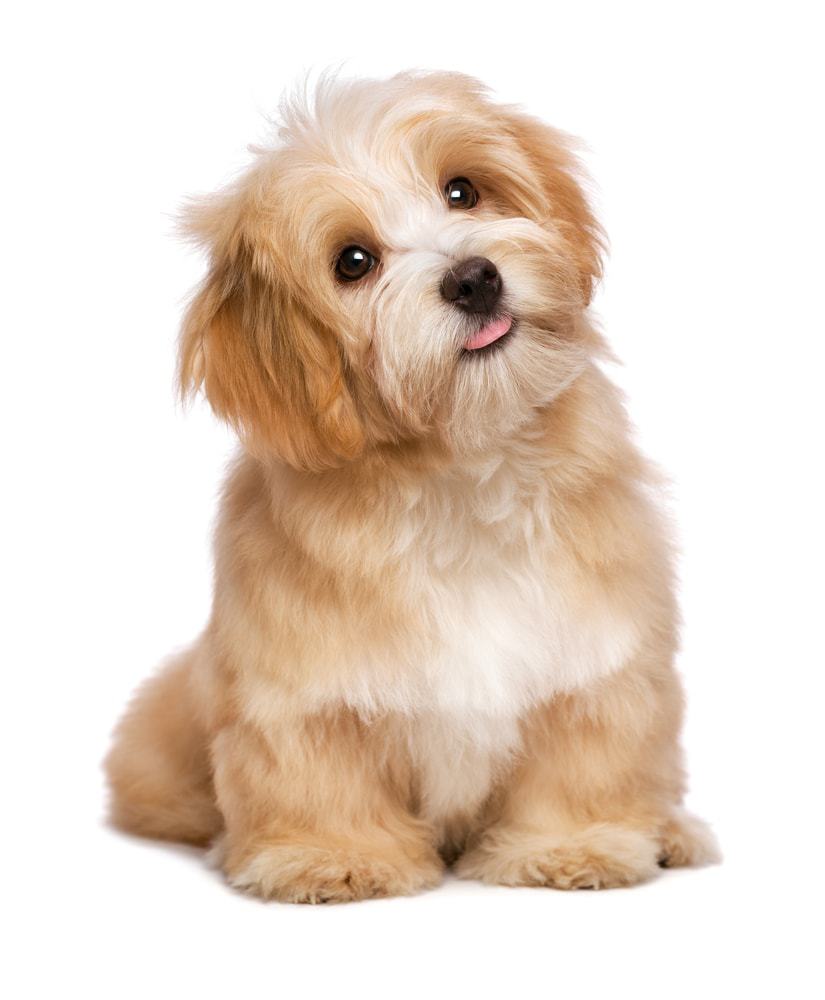The calluses on your dog’s elbow might seem like nothing, but they can lead to big trouble when gone untreated.
This is a common problem among many dogs, and it’s something that all owners should take seriously.
What Causes Elbow Calluses on Dogs?
Calluses can form on a dog’s elbow over time as a result of resting on hard surfaces. Lots of dogs ditch their comfy padded begs in favor of hardwood flooring.
While it might seem like a mystery to us, they appear to be very comfortable. These calluses are the price that your dog pays for a comfy spot to lay on though.
The calluses themselves are patches of rough skin that slowly appear over the ulna bone. As your dog continues collapsing onto the hard floor, these areas of their skin get more irritated. This is their body’s way of trying to protect the bone from being exposed.
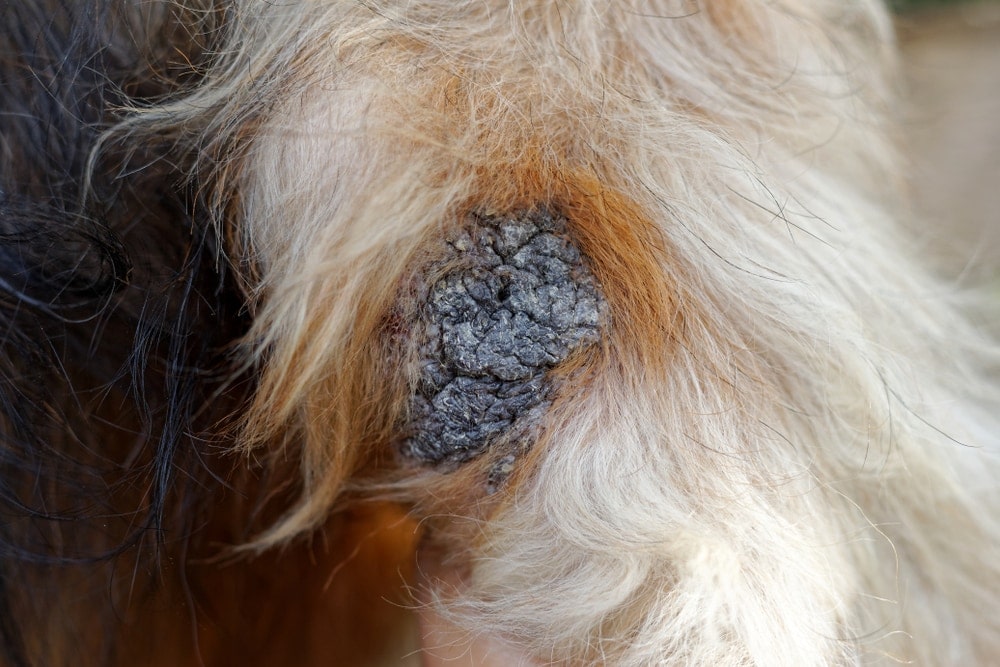
Which Dogs Are Prone to Elbow Calluses?
Any dog can develop elbow calluses, but the larger breeds are definitely more prone to this issue. These calluses tend to form in the warmer months, as many dogs tend to lie on the hard floor to stay cool. Over time this can result in irritation of the skin on the elbows, which causes calluses to form.
Potential for Infection
There is no question that elbow calluses can be very painful for a dog, especially if they go untreated. The real risk, however, is that the calluses turn into hygromas that become infected. The fluid inside these sacs that form on the elbows can become very serious over a short period of time.
If infected calluses are ignored, they can present a very serious health threat to your pet. It is even possible that they could die if the infection isn’t treated with antibiotics soon. You will need to get a prescription from your veterinarian for this treatment.
Effective Ways to Treat Elbow Calluses
If your dog has already started developing calluses on their elbows, you will have numerous treatment options to explore. Ask your vet before using anything.
- Petroleum Jelly: Sometimes petroleum jelly/Vaseline can work wonders for treating mild calluses. This will prevent the calluses from cracking and get infected.
- Coconut oil: Another good natural remedy for these canine calluses is coconut oil. This oil has been known to work very well for dry and raw areas on the skin. Simply spread it out on the affected area for a few minutes. It will help with healing the calluses while giving your pet relief from the pain.
- Antibiotics: If the calluses have become infected, you will need to obtain an antibiotic prescription for your pet. This will combat the infection so that it doesn’t continue to get worse. You should notice a daily improvement in your dog’s calluses while they are on the antibiotic medication.
- Vitamin E: Applying vitamin E to the affected areas in the form of a cram can smooth out the skin. This is another good way to prevent cracking and further damage to the skin so that it does not become infected.
If you apply any sort of topical treatment to your dog, you’ll want to keep them from getting on any of your furniture for at least an hour. This will ensure that the remedy has a chance to work while keeping your furniture from getting soiled.
Preventing Elbow Calluses
There are multiple things that you can do to prevent calluses from forming on your dog’s elbows. These methods are simple yet effective, and it is important that you learn about as many of them as possible.
1. Get a Soft Bed for your Dog (And Make Them Use it!)
It is crucial that you have a soft spot for your dog to relax and sleep on each day. If they seem intent on using the floor instead, you’ll need to break them of that habit.
It might take a little while, but you should eventually be able to get them to use the bed. This is one of the most effective ways to prevent elbow calluses from forming in the first place.
2. Keep a Close Eye on Their Elbows
You’ll also need to make a point of keeping a close eye on your dog’s elbows. If you notice any irritation on this part of their body, you’ll have to do everything possible to minimize the trauma.
By recognizing signs of these calluses early on, you can prevent infection and the needless suffering of your pet. You should check their elbows at least once or twice each week, especially if they like to sleep on hard surfaces.
3. Don’t Let Them Become Overweight
The more overweight your dog is, the more likely they will be to develop calluses. You can help your dog to stay at a normal weight by ensuring they get adequate exercise on a daily basis. It is also important to make sure you are feeding them nutritious food that promotes a lean and healthy body.
When Should I Take My Dog to the Vet?
If you start to notice your dog’s calluses become red, swollen or filled with fluid, you should make an appointment with your vet right away. These are all signs of infection, which will only get worse until your dog starts a course of antibiotics. The sooner you get them treatment, the sooner they will start to heal.
Conclusion
- All dogs can develop elbow calluses, but larger breeds and overweight dogs are most prone to them.
- It is important that you keep a close eye on your dog’s elbows to ensure that calluses do not develop.
- Failing to treat your dog’s calluses can lead to a serious infection.
- Make sure that your dog has a soft and comfortable place to sleep and rest.
- If the calluses are not infected, you should try a natural topical remedy like Vaseline or vitamin E.
- Elbow calluses are very painful for dogs and demand immediate attention.
